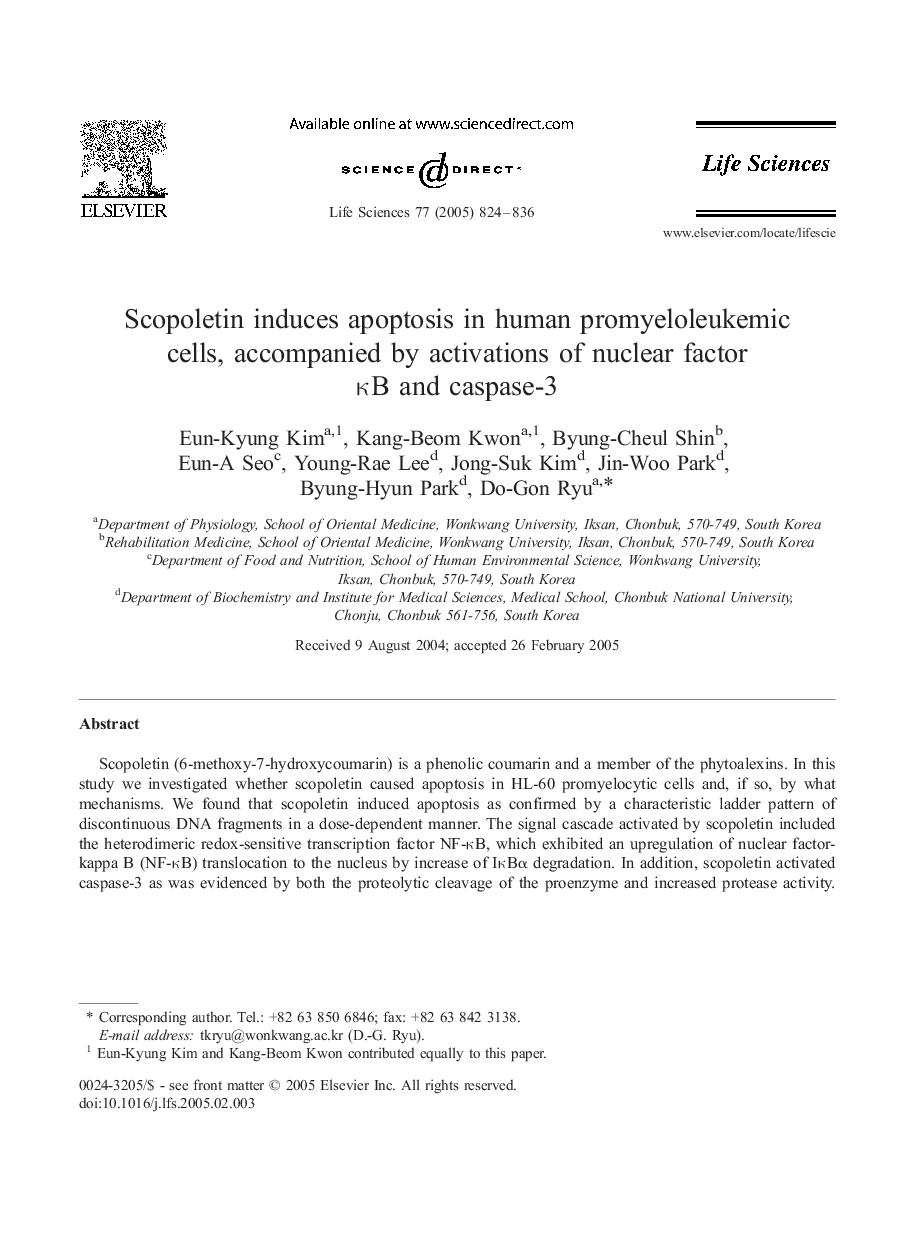| Article ID | Journal | Published Year | Pages | File Type |
|---|---|---|---|---|
| 9013043 | Life Sciences | 2005 | 13 Pages |
Abstract
Scopoletin (6-methoxy-7-hydroxycoumarin) is a phenolic coumarin and a member of the phytoalexins. In this study we investigated whether scopoletin caused apoptosis in HL-60 promyelocytic cells and, if so, by what mechanisms. We found that scopoletin induced apoptosis as confirmed by a characteristic ladder pattern of discontinuous DNA fragments in a dose-dependent manner. The signal cascade activated by scopoletin included the heterodimeric redox-sensitive transcription factor NF-κB, which exhibited an upregulation of nuclear factor-kappa B (NF-κB) translocation to the nucleus by increase of IκBα degradation. In addition, scopoletin activated caspase-3 as was evidenced by both the proteolytic cleavage of the proenzyme and increased protease activity. Activation of caspase-3 resulted in the cleavage of 116 kDa poly(ADP-ribose) polymerase (PARP) to 85 kDa cleavage product in time-and dose-dependent fashions. Prior treatment of the cells with pyrrolidine dithiocarbamate, a potent inhibitor of NF-κB activation, or Ac-DEVD-CHO, a specific caspase-3 inhibitor, prevented scopoletin-induced caspase-3 activation, PARP cleavage, and finally DNA fragmentation. Taken together, these results suggest that scopoletin induces NF-κB activation, which, in turn, causes activation of caspase-3, degradation of PARP, and eventually leads to apoptotic cell death in HL-60 cells.
Related Topics
Health Sciences
Medicine and Dentistry
Cardiology and Cardiovascular Medicine
Authors
Eun-Kyung Kim, Kang-Beom Kwon, Byung-Cheul Shin, Eun-A Seo, Young-Rae Lee, Jong-Suk Kim, Jin-Woo Park, Byung-Hyun Park, Do-Gon Ryu,
